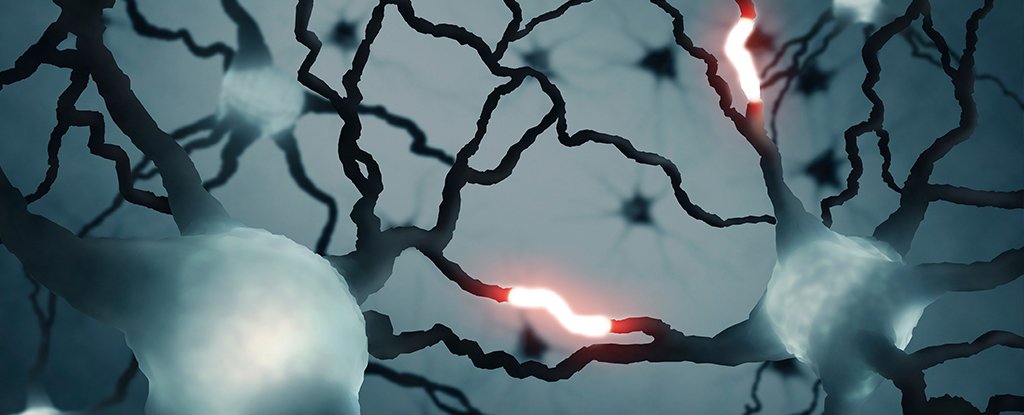Products You May Like
Scientists have identified a unique form of cell messaging occurring in the human brain, revealing just how much we still have to learn about its mysterious inner workings.
Excitingly, the discovery hints that our brains might be even more powerful units of computation than we realized.
Back in 2020, researchers from institutes in Germany and Greece reported a mechanism in the brain’s outer cortical cells that produces a novel ‘graded’ signal all on its own, one that could provide individual neurons with another way to carry out their logical functions.
By measuring the electrical activity in sections of tissue removed during surgery on epileptic patients and analyzing their structure using fluorescent microscopy, the neurologists found individual cells in the cortex used not just the usual sodium ions to ‘fire’, but calcium as well.
This combination of positively charged ions kicked off waves of voltage that had never been seen before, referred to as a calcium-mediated dendritic action potentials, or dCaAPs.
Brains – especially those of the human variety – are often compared to computers. The analogy has its limits, but on some levels they perform tasks in similar ways.
Both use the power of an electrical voltage to carry out various operations. In computers it’s in the form of a rather simple flow of electrons through intersections called transistors.
In neurons, the signal is in the form of a wave of opening and closing channels that exchange charged particles such as sodium, chloride, and potassium. This pulse of flowing ions is called an action potential.
Instead of transistors, neurons manage these messages chemically at the end of branches called dendrites.
“The dendrites are central to understanding the brain because they are at the core of what determines the computational power of single neurons,” Humboldt University neuroscientist Matthew Larkum told Walter Beckwith at the American Association for the Advancement of Science in January 2020.
Dendrites are the traffic lights of our nervous system. If an action potential is significant enough, it can be passed on to other nerves, which can block or pass on the message.
This is the logical underpinnings of our brain – ripples of voltage that can be communicated collectively in two forms: either an AND message (if x and y are triggered, the message is passed on); or an OR message (if x or y is triggered, the message is passed on).
Arguably, nowhere is this more complex than in the dense, wrinkled outer section of the human central nervous system; the cerebral cortex. The deeper second and third layers are especially thick, packed with branches that carry out high order functions we associate with sensation, thought, and motor control.
It was tissues from these layers that the researchers took a close look at, hooking up cells to a device called a somatodendritic patch clamp to send active potentials up and down each neuron, recording their signals.
“There was a ‘eureka’ moment when we saw the dendritic action potentials for the first time,” said Larkum.
To ensure any discoveries weren’t unique to people with epilepsy, they double checked their results in a handful of samples taken from brain tumors.
While the team had carried out similar experiments on rats, the kinds of signals they observed buzzing through the human cells were very different.
More importantly, when they dosed the cells with a sodium channel blocker called tetrodotoxin, they still found a signal. Only by blocking calcium did all fall quiet.
Finding an action-potential mediated by calcium is interesting enough. But modelling the way this sensitive new kind of signal worked in the cortex revealed a surprise.
In addition to the logical AND and OR-type functions, these individual neurons could act as ‘exclusive’ OR (XOR) intersections, which only permit a signal when another signal is graded in a particular fashion.
“Traditionally, the XOR operation has been thought to require a network solution,” the researchers wrote.
More work needs to be done to see how dCaAPs behave across entire neurons, and in a living system. Not to mention whether it’s a human-thing, or if similar mechanisms have evolved elsewhere in the animal kingdom.
Technology is also looking to our own nervous system for inspiration on how to develop better hardware; knowing our own individual cells have a few more tricks up their sleeves could lead to new ways to network transistors.
Exactly how this new logic tool squeezed into a single nerve cell translates into higher functions is a question for future researchers to answer.
This research was published in Science.
A version of this article was originally published in January 2020.
